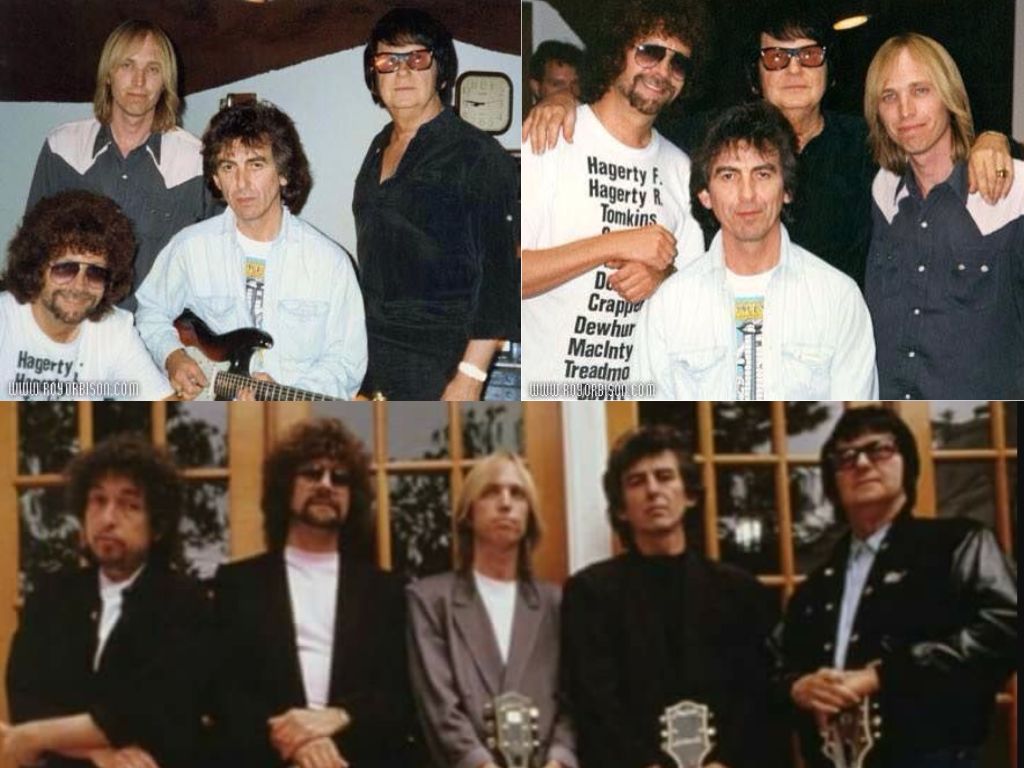
The song paints a cinematic tale of doomed love and a life on the run.
In the autumn of 1988, a musical juggernaut arrived that felt both entirely new and comfortingly familiar. The Traveling Wilburys, a supergroup composed of some of the most iconic figures in rock history—George Harrison, Jeff Lynne, Bob Dylan, Roy Orbison, and Tom Petty—released their debut album, Traveling Wilburys Vol. 1. This collection of songs was a beautiful accident, born from friendship and a desire to simply make music together. While the album as a whole was a commercial and critical success, reaching as high as number 3 on the Billboard 200 chart and selling millions of copies, it’s the album’s longest track, “Tweeter and the Monkey Man,” that stands out as a sprawling, poetic masterpiece. It’s a song that, much like a faded photograph, captures a time and a place with vivid, heartbreaking detail, and it’s one that has always held a special place in my heart.
The story of the song’s creation is as legendary as the tale it tells. It began with Bob Dylan and Tom Petty tossing around ideas, with Dylan declaring he wanted to write a song about a character named “Tweeter.” Petty added “the Monkey Man,” and from there, a narrative began to unfold. What they created was not just a song, but a full-fledged cinematic story, a miniature film noir set in the familiar, gritty landscape of New Jersey. The lyrical genius of Dylan is on full display here, crafting a tale of two small-time drug dealers on the run from an undercover cop. But as with all great stories, there are layers. This is not just a crime story; it’s a love story and a tragedy. The undercover cop’s sister, Jan, loves the Monkey Man, adding a complex emotional web to the high-stakes chase. The story is a tapestry woven with threads of longing, betrayal, and a desperate search for freedom “just across the Jersey Line.”
The brilliance of “Tweeter and the Monkey Man” lies in its homage to another New Jersey legend: Bruce Springsteen. The song is packed with references to Springsteen’s own catalog of work, a playful and deeply respectful nod from one master storyteller to another. Listen closely, and you’ll hear echoes of “Stolen Car,” “Mansion on the Hill,” “Thunder Road,” and “State Trooper,” among others. It’s an insider’s joke, but one that adds richness and depth for any fan of the Boss. The lyrics even cleverly reference specific New Jersey locations like Rahway Prison and Jersey City, grounding the fantastical narrative in a tangible, real-world setting. This wasn’t a parody; as Petty himself later clarified, it was a tribute, a loving acknowledgment of Springsteen’s influence on the American musical landscape. It was a testament to the idea that even legends can find inspiration in the work of their peers, and that sometimes, the greatest art comes from a place of shared admiration and fun. The recording process itself, with the “English guys”—Harrison and Lynne—listening in as Dylan and Petty improvised the story, speaks to the organic, collaborative spirit that defined the Traveling Wilburys.
But what truly elevates the song is its emotional core. It’s a ballad for the outcasts, the forgotten souls of the American landscape. Tweeter, who we learn was “a boy scout before she went to Vietnam,” is a transgender woman, a detail that adds a layer of profound poignancy to her character and her relationship with the Monkey Man. The line “Jan said to the Monkey Man, ‘I’m not fooled by Tweeter’s curl / I knew him long before he ever became a Jersey girl'” is a heart-wrenching moment of revelation, a glimpse into a past that has been shaped by hardship and change. The song doesn’t judge; it simply tells a story, and in doing so, it evokes a powerful sense of empathy for its flawed protagonists. The song’s final moments, with the tragic shootout and the ambiguous fate of its characters, leave a lasting impression, a haunting memory of a life lived on the fringes. For those of us who grew up with these sounds, this song is more than just a track on an album; it’s a feeling, a memory of a time when music felt like a secret whispered between friends, a shared understanding of life’s complexities and its fleeting moments of beauty. It’s a reminder of the power of a good story, a timeless tale that still resonates, decades later, with the same emotional weight.